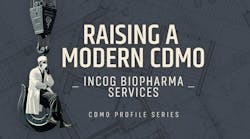The Falsified Medicines Directive (FMD) was enacted by the European Commission in 2011. The directive introduces harmonized European measures to prevent falsified medicines from entering the legal supply chain.
Companies that manufacture, sell or dispense medications in the European Union have until February 9, 2019 to comply with the track and trace regulations outlined in the directive. Overall, the FMD covers three regulatory areas: serialization, compliance reporting and verification. The directive requires companies to place “safety features” on the packaging of certain medicinal products for the purposes of identification and authentication.
Specifically, according to the directive, safety features include anti-tamper devices and unique identifiers. An anti-tamper device is very simply described as a device that allows the verification of whether the packaging of a medicinal product has been tampered with. The unique identifier is more complex and must be composed of a product code, serial number, national reimbursement number (where required), batch number, and expiration date. It must be carried within a 2D Data Matrix barcode, and in human readable text on the package.
The following is a collection of inside perspectives on where the pharmaceutical industry stands, what challenges it is facing and what actions need to be taken for FMD compliance.[pullquote]
Manfred Voglmaier, vice president, DACH sales, TraceLink
As we saw in our Global Drug Supply, Safety and Traceability Survey, which painted a clear picture of the pharma sector’s readiness for serialization regulations and worryingly, there remains an uncomfortably large number of businesses that simply aren’t ready. The survey found that one-third of pharma companies do not feel prepared for EU FMD and 46% of CMOs have not yet started to prepare for the FMD requirements.
With the FMD deadline now only a year away, this lack of readiness should be activating companies through the industry. There remains a lack of understanding of the complexity and resource intensiveness of serialization. The implementation process is almost entirely new and lot of uncertainty remains when it comes to understanding what is really needed to comply with different markets.
One of the biggest problems is that many companies think that vendors have sufficient amounts of delivery capacity and that later implementation will lead to lower costs. However, the reality is a stark contrast. A serialization program typically takes 6-9 months to implement, meaning businesses looking to make the February 2019 FMD deadline should be starting their projects by the end of Q1 in 2018 at the latest.
For businesses yet to start their serialization projects, it is vital that they specify any required third-party support, the total internal resource needed and the level of collaboration with partners that will be required for successful implementation and act immediately.
The huge volumes of data that will be generated and shared across the industry is perhaps the greatest challenge. Serialization creates the need for a connected supply chain and those companies that leverage existing multi-tenant networks can take advantage of multiple, seamless connections with their partners. At this stage in the industry’s serialization journey, risk mitigation is more important than ever. That is why we strongly believe that working with well established, experienced partners, with the capability to expedite trade partner connections through an extensive network, are fundamental to serialization success both in the short term to ensure compliance and in long term, to help realise the benefits of a truly connected supply chain.
______________________________________________________________________________________________
Marco Baietti, commercial director, SEA Vision
While the FDA gave many businesses a welcome reprieve by extending the deadline, the EU’s pharma industry is not likely to be as lucky. The deadline for compliance with the EU’s Falsified Medicines Directive is now less than a year away. Now, more than ever, pharmaceutical manufacturers need to make serialization a priority. If they are yet to begin their serialization programs, then they may find themselves facing an uphill battle to meet the deadline.
More problematic is the timeframe for selecting, delivering and validating line systems. Some vendors are currently proposing timescales of over 12 months to deliver line systems which will now take implementation beyond the EU deadline.
Serialization is not a task that can be completed overnight and the repercussions of missing the deadline will have a significant detrimental impact on the success and longevity of a business. Companies that fail to comply with the regulations risk everything from production downtime to the loss of business to more prepared companies in key markets. More proactive businesses should begin reviewing processes and exploring the opportunities to improve productivity and, in some instances, achieve a competitive advantage as part of their serialization program.
The one-year countdown will come as a welcome milestone for the well-prepared as they position their offering as not only compliant, but more efficient than their competitors’ offerings.
_______________________________________________________________________________________________
Erik Haeffler, Vice President of Manufacturing Services, Recipharm
The time scales associated with serialisation have been discussed at length. Although a year may sound like a long time, it’s a very short space of time to implement a lot of changes. This challenge is no longer isolated to contract manufacturers; their customers are also starting to feel the pressure. Marketing authorisation holders (MAHs) who have outsourced requirements need to start finalising packaging artwork to create space for barcodes and ensuring they’re set up to report data into the EU repository.
It is vital that companies start to consider the impact beyond their lines at this point. As the deadlines loom closer contract manufacturers will become increasing busy onboarding new customers who are unprepared. This means there is likely to be longer lead times for implementing changes. Customers can no longer hold out until the last minute without incurring hurdles at a later date.
Staffan Widengren, Director of Corporate Projects, Recipharm
Even with the deadlines so close, many marketing authorisation holders (MAHs) have still not selected a level four system that will allow them to store serialization data and even less have started the onboarding process to the European Medicines Verification System (EMVS). Onboarding to the EMVS takes time and beyond this, companies need to think about connecting to the relevant National Medicines Verification Organisations (NMVOs), meaning time is tight.
The European Medicines Verification Organisation increased the fee for onboarding to the EMVS in January 2018 and this will increase again in June 2018, which is an incentive for companies to act sooner rather than later. Realistically if companies do not start onboarding until after June 2018 they will probably not be ready until the February 2019 deadline or later leaving no time to test their solution.
As a CDMO, we have started to encourage our customers to onboard sooner rather than later to ensure a smooth transition come the deadlines. We are also exploring ways to offset the costs of introducing a level four system for companies with only a couple of SKUs as cost remains a major barrier for many when it comes to implementation.
Dexter Tjoa, director of corporate strategy, Tjoapack
With just over a year to go until the deadline, the EU FMD remains a challenge for the pharmaceutical industry. Cost remains a huge hurdle for many companies when it comes to implementing the necessary software and hardware for serialization. As a result, small and mid-sized pharma companie are looking to outsource their serialization requirements.
It is important that those looking for a reliable outsourcing partner do not underestimate product transfer and data exchange integration timelines. Generally speaking, three to four months, depending on complexitity, is a realistic timeframe to ensure a CPO can take the necessary steps to ensure a successful transfer and serialisation integration. This is still considerably shorter than an in-house implementation project which can easily run twelve to eighteen months given current supplier leadtimes.
In addition, the European Medicines Verification Organisation (EMVO) recently published an announcement that the end of June 2018 should be considered the last opportunity to start on-boarding to the EU hub and ensure timely implementation. However, many companies have yet to select a level four and level five software provider, either due to the associated cost or the complexity of implementation. Employing a third-party solution provider such as Meditraq can help companies to navigate these hurdles and enables companies to ensure the safe and secure storage and exchange of serialization data.
In short, the next few months are crucial for companies looking to outsource serialization. Selecting appropriate partners to ensure compliance is important but companies should also look beyond the February 2019 deadline to see how these partners can help optimize their supply chain management given this new data requirements.





